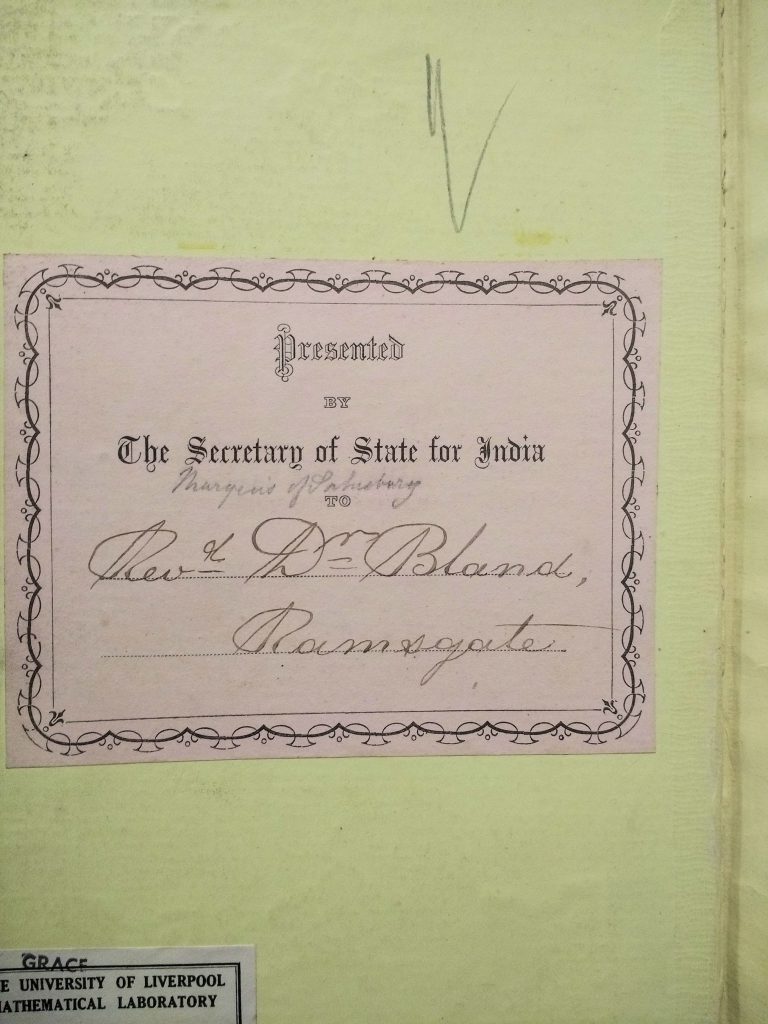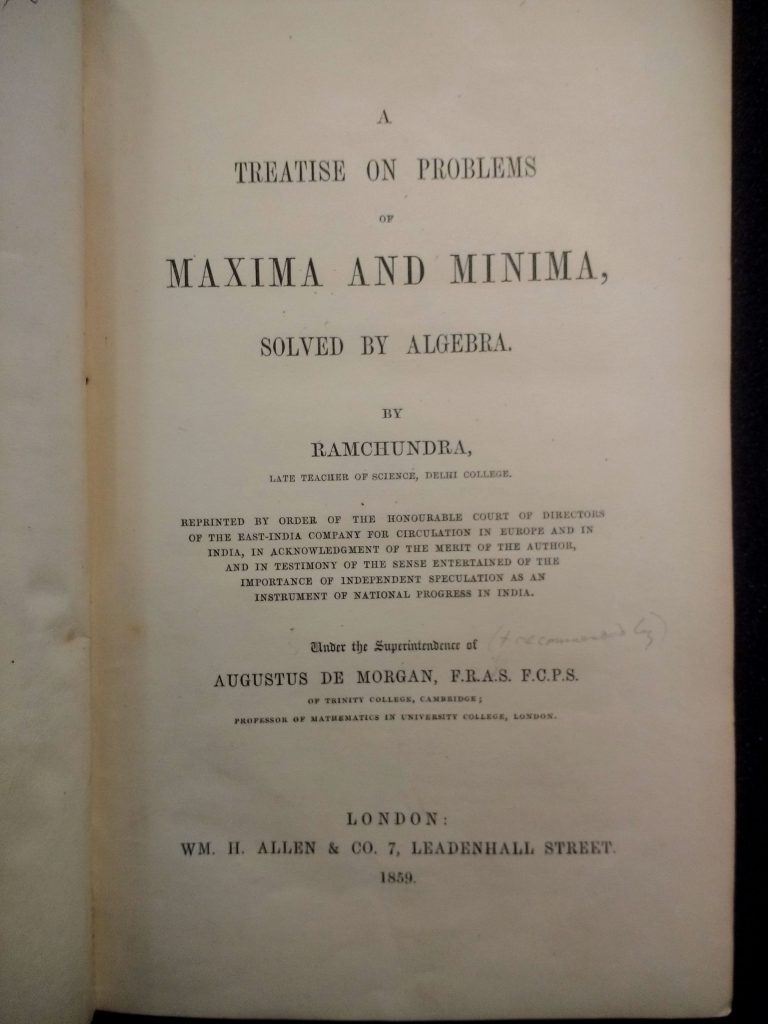This post was written by 2nd year History student Eddie Meehan.
The Grace Library of the Department of Applied Mathematics is a collection of 17th to 19th century mathematics texts, centred around the collections of Walter and Alicia Stott and Duncan C Fraser, and named after Samuel Forster Grace. The collection is rooted firmly in the city and University of Liverpool, and particularly in the Liverpool Mathematics Society and the Worshipful Company of Actuaries. I’m working on the collection as part of History in Practice, a work experience module available for second year history students at the university.
One item I catalogued in the Grace Library collection was A treatise on problems of maxima and minima, solved by algebra, written by the Indian mathematician Ramchundra in 1850. Ramchundra was born in 1821 in Panipat into a family of the Kayastha caste – a Hindu caste of bureaucrats – to a father who worked in the Indian revenue service. His father died in 1831, which forced Ramchundra into marriage in 1832 at just eleven years old, almost certainly for the financial support the dowry would provide. Ramchundra was able to pursue some education at the English Government School in Delhi and later at Delhi College, where he was later appointed to a teaching role. Here, he pursued his own work; the most significant of which was the Treatise that is in the Grace collection in Liverpool.
Noted mathematician Augustus de Morgan published the work in 1859 in London to try and bring it to a wider audience outside of India, despite poor reviews from other British mathematicians working in India. During this period, there was an increasing belief in Britain that the colonial subjects of the British Empire should be ‘educated’ in European ways. This atmosphere may have stimulated de Morgan’s interest in the work, but it also hindered its acceptance. Despite being published in London, the book received little interest from scholars in Britain and Europe. Ramchundra is not particularly well known even to this day in mathematics – books have been written on topics covered by him that do not even mention his work.
The Grace collection contains two copies of the work – one published in Calcutta and thus the original, and a copy of the London published version with de Morgan’s foreword. The London version was presented by the Secretary of State for India to a Reverend Dr. Bland, suggesting that it was at least recognised by the governing authorities in India. It isn’t clear how the original came into the possession of Walter Stott and Alicia Boole and then Duncan Fraser, who bequeathed the book to the University as part of the Walter Stott collection.


